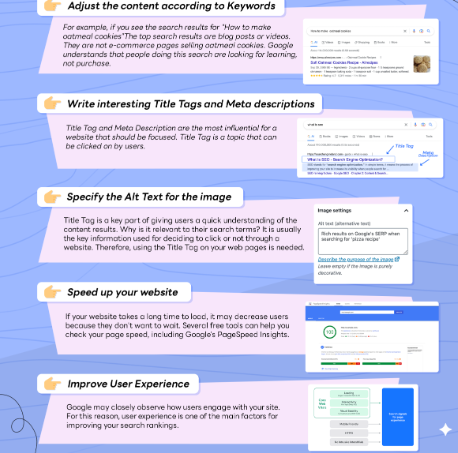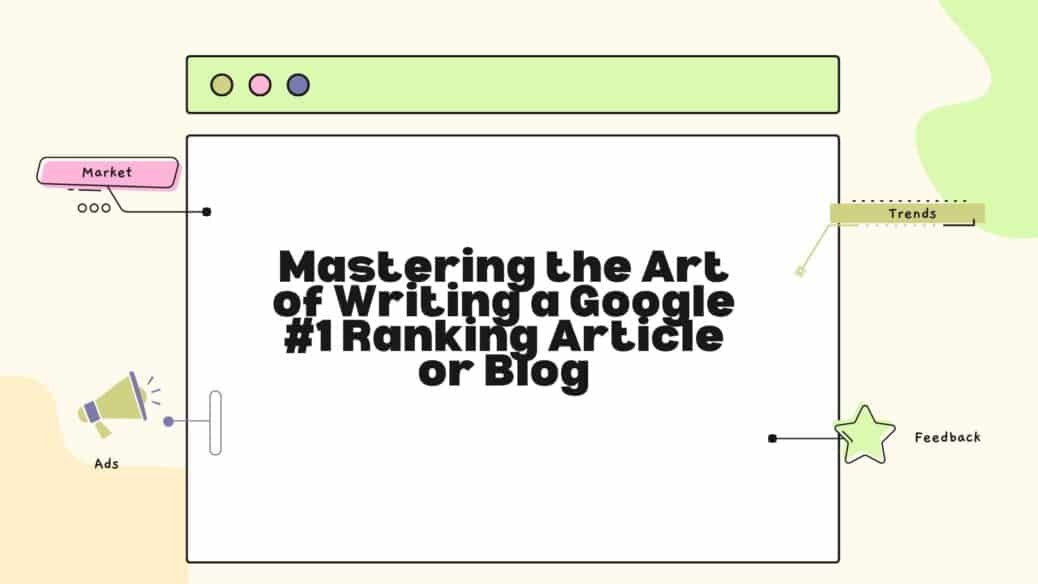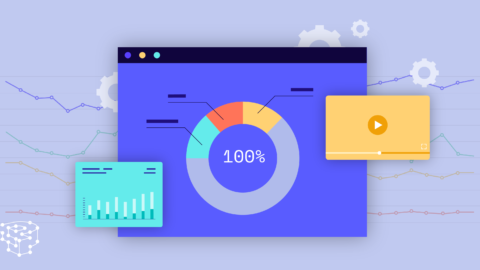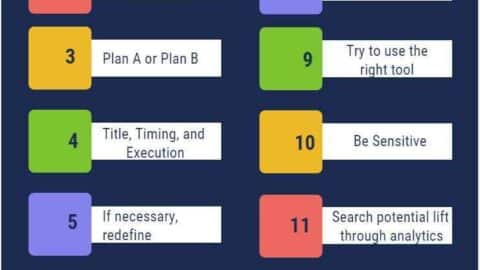Mastering the Art of Writing a Google #1 Ranking Article or Blog
In today’s age of information overflow, content stands as the reigning monarch. Yet, in the vast kingdom of the digital realm, not all content wears the crown equally. Bloggers, content producers, and website proprietors constantly aspire to acquire prime real estate on Google’s search results – that elusive #1 spot. This position is more than just a number; it’s a testimony to a content’s quality, relevance, and user appeal. Let’s dive deeper into each facet of creating such influential Google #1 Ranking Article.
Table of Contents
Atomic Habits That Will Make You Stand Out in Business Life: 5 Steps, 5 Gains – projectcubicle

Writing a Google #1 Ranking Article
Decoding Google’s Enigmatic Ranking Algorithm
Every digital enthusiast has at some point wondered: How does Google’s mysterious ranking algorithm actually work? It’s not just about keyword stuffing or having an aesthetically pleasing website. Google #1 Ranking Article evaluates a myriad of elements, some of which are:
- Keyword Pertinence: Simply put, how aptly does your content answer the searcher’s query? Google prioritizes user experience, and thus, relevance is pivotal. It’s not just about having the keyword but ensuring the content surrounding it genuinely addresses user needs.
- Backlinks: Think of backlinks as the “word of mouth” in the digital domain. When reputable sites link back to you, it’s akin to them vouching for your content’s credibility. But Google doesn’t just count these backlinks; it weighs their quality and relevance.
- User Experience: From site loading speed, mobile optimization to user-friendly navigation, how smoothly users can traverse and interact with your site plays into rankings. Google’s algorithms are designed to interpret user behaviors, such as bounce rates and session duration, to determine a site’s appeal.
- Content Caliber: Gone are the days when mediocrity could pass. Today, Google’s algorithm has the prowess to determine the depth, quality, and originality of the Google #1 Ranking Article. From checking for plagiarism to assessing the content’s thoroughness, the bar is set high.
Keyword Research: SEO’s Building Block
It’s not enough to write passionately about a topic. For SEO success, one needs to intersect passion with what people are actively searching for. This is where keyword research shines. Leveraging tools like the Google Keyword Planner and SEMrush, content creators can discern which terms related to their niche have significant search volume but lesser competition. This strategic approach ensures that the content isn’t just valuable but also discoverable.
Long-Tail Keywords: Mining Untapped Potential
While mainstream keywords get the lion’s share of attention, long-tail keywords are the unsung heroes. These extended keyword phrases are gold mines for targeting niche, specific queries. Because of their precise nature, they often face less competition and have a higher propensity to convert since they cater to more specific intents.
On-Page SEO: Fine-tuning for Triumph
On-page SEO is the art and science of optimizing individual webpages for search engines. Key facets include:
- Keyword Deployment: Strategic placement of keywords isn’t about stuffing, but rather ensuring they are present where they matter most – the title, meta descriptions, headers, and sprinkled naturally within the content.
- Content Structuring: A well-structured article aids both readability and SEO. Using H1 through H4 tags appropriately ensures a logical content hierarchy which search engines appreciate.
- Internal Linking: A well-interlinked site can significantly enhance user experience. By linking to related content within your own site, you not only keep users engaged but also distribute page authority across your domain.
Sculpting Content That Resonates and Reverberates
The world of digital content is vast, making standout content a necessity. To resonate with your audience:
- Value-Addition: Every line penned should offer something new, something valuable. Whether it’s a fresh perspective, actionable tips, or deep insights, ensure readers leave your page feeling enriched.
- Relevance: An article on floppy disks might be nostalgic but isn’t what the current user base is searching for. Staying updated with trends, understanding user pain points, and addressing current queries can significantly amplify content relevance.
- Shareability: In the age of social media, creating share-worthy content can amplify reach manifold. This doesn’t mean crafting viral content always but ensuring your content evokes emotions or insights that readers feel compelled to share.
The Unyielding Influence of Backlinks
In the vast sea of content, backlinks serve as lighthouses guiding Google’s ships (bots) towards your content island. But it’s essential to understand:
- Quality Over Quantity: Ten nods from world-renowned sites like BBC or National Geographic can be exponentially more beneficial than hundreds from lesser-known, low-authority sites.
- Relevance Over Randomness: A tech blog getting a backlink from a culinary site might not carry as much weight as one from a tech news platform. Google assesses the relevance of the linking site to ensure genuine, organic linking patterns.
By understanding and harnessing each of these facets, content creators can better position their articles and blogs for success in the competitive arena of Google search rankings.
Writing for Humans, Not Just Search Engines
While mastering the algorithmic intricacies is crucial, the heart of content is human connection. Writers should aim to strike a balance between SEO optimization and human engagement.
- Use an Informal Tone: In an era where conversations are valued, writing should feel like a dialogue rather than a monologue. Informal tones break barriers, making content more relatable, digestible, and inviting, thus fostering a genuine connection with the audience.
- Utilize Personal Pronouns: The words “you” and “we” are not just pronouns; they are bridges between the writer and the reader. They give a sense of individual attention, making readers feel the content speaks directly to them, thereby building a rapport and enhancing engagement.
- Keep It Simple: Complexity can alienate; simplicity can attract. Avoid industry jargon and convoluted sentences. Aim for clarity and coherence to ensure content is accessible and appealing to a broad spectrum of readers.
- Engage the Reader: The art of engagement lies in making the reader a part of the conversation. Asking questions, sharing anecdotes, and inviting opinions can turn passive reading into active engagement, increasing dwell time and interaction.
Monitoring and Updating Your Content
In the dynamic digital world, content needs to evolve. SEO is an ongoing effort, and content should be monitored and refined periodically. Regular reviews and updates can maintain relevance and value, catering to the ever-evolving user needs and preferences. Keep abreast of user comments, industry advancements, and trending topics to ensure that your content remains a valuable resource over time.
Building a Community Around Your Content
Beyond words on a page, content has the power to build communities. Engage with your audience through comments, social media interactions, and forums. Respond to their thoughts, acknowledge their insights, and address their concerns. By fostering a sense of belonging and cultivating relationships, content creators can build a loyal reader base, which can translate into higher engagement, shares, and overall visibility.
The Power of Social Sharing
In the interconnected web, social sharing is a catalyst for content visibility. Encourage readers to share your insights, opinions, and stories on their social platforms. This not only expands your content’s reach but also augments its credibility. Social signals, although not a direct ranking factor, can impact your content’s performance indirectly by increasing visibility, traffic, and user interaction, all of which are valued by Google’s algorithms.
Conclusion: Crafting a Symphony of Words and SEO
Securing that #1 spot on Google isn’t about isolating elements but orchestrating them into a harmonious symphony. It is about interweaving informal tones, SEO strategies, value-driven content, and human-centric approaches. By being attuned to both algorithms and human inclinations, content creators can compose pieces that resonate with readers and reverberate through the search rankings. Dedication, continuous learning, and adaptation are the conductors leading this symphonic journey towards digital visibility and success.
FAQs
- How long does it take for an article to rank #1 on Google?
- Ranking timelines vary based on competition, content quality, and SEO effectiveness. It could range from weeks to months, depending on various factors.
- Is it essential to use long-tail keywords?
- Long-tail keywords are potent tools for precision targeting but incorporating a mix of generic and specific keywords usually yields the most balanced and robust results.
- Should I focus more on on-page SEO or backlinks?
- Both elements are pivotal. A synergistic approach that combines robust on-page SEO with a strategic backlink profile often yields the most sustainable and impactful results.
- What’s the significance of social sharing in SEO?
- Social sharing broadens content reach and engagement, contributing to increased visibility, which, while not a direct ranking factor, indirectly influences SEO success.
- How often should I update my content?
- Regular updates ensure content relevance and freshness. Depending on the content type and subject matter, updates every few months or whenever significant industry changes occur are recommended.
In synthesizing all these elements, content creators can bring forth pieces that are not just found but also loved, not just clicked but also remembered, creating a seamless blend of algorithmic appeal and human connection.
Hello, I’m Cansu, a professional dedicated to creating Excel tutorials, specifically catering to the needs of B2B professionals. With a passion for data analysis and a deep understanding of Microsoft Excel, I have built a reputation for providing comprehensive and user-friendly tutorials that empower businesses to harness the full potential of this powerful software.
I have always been fascinated by the intricate world of numbers and the ability of Excel to transform raw data into meaningful insights. Throughout my career, I have honed my data manipulation, visualization, and automation skills, enabling me to streamline complex processes and drive efficiency in various industries.
As a B2B specialist, I recognize the unique challenges that professionals face when managing and analyzing large volumes of data. With this understanding, I create tutorials tailored to businesses’ specific needs, offering practical solutions to enhance productivity, improve decision-making, and optimize workflows.
My tutorials cover various topics, including advanced formulas and functions, data modeling, pivot tables, macros, and data visualization techniques. I strive to explain complex concepts in a clear and accessible manner, ensuring that even those with limited Excel experience can grasp the concepts and apply them effectively in their work.
In addition to my tutorial work, I actively engage with the Excel community through workshops, webinars, and online forums. I believe in the power of knowledge sharing and collaborative learning, and I am committed to helping professionals unlock their full potential by mastering Excel.
With a strong track record of success and a growing community of satisfied learners, I continue to expand my repertoire of Excel tutorials, keeping up with the latest advancements and features in the software. I aim to empower businesses with the skills and tools they need to thrive in today’s data-driven world.
Suppose you are a B2B professional looking to enhance your Excel skills or a business seeking to improve data management practices. In that case, I invite you to join me on this journey of exploration and mastery. Let’s unlock the true potential of Excel together!
https://www.linkedin.com/in/cansuaydinim/










